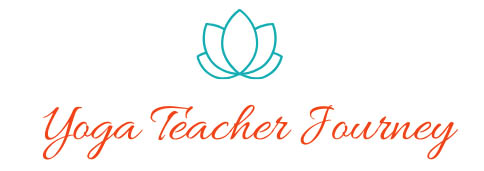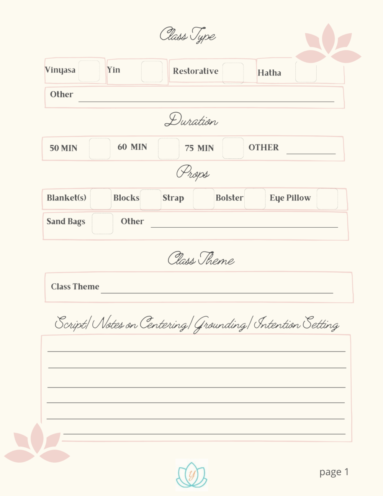Students taking your online yoga class want something more than they could get just by searching for any free class on YouTube. So what exactly are they hoping to get from your online class?
CONNECTION
We all have been lacking and longing for connection since the first time we heard the early 2020 word of the year “quarantine.”
Even though most studios (who have survived) have re-opened with new social distancing and safety regulations, things are definitely NOT the same. There’s no before or after chat, no hands-on assists, and teaching through demoing – on the mat – has become the new norm. Many students are still not comfortable entering a studio; therefore, taking classes online is their best option. This leaves students craving something that used to fulfill a strong connection to the yoga community. So how do you deliver that feeling of connection in new ways?
Get to know your students. If possible greet them by name saying hello as they enter the online platform. Smile! Welcome them and thank them for joining your class. Introduce yourself and be personable. Even though it may feel as if you’re talking to a computer, remind yourself frequently that you’re teaching to real students. Laugh, smile, and offer encouragement and affirmation often. Always end class by thanking them for joining your class.
Keep them involved. Begin each class with telling them what they’ll possibly need for the class (blocks or substitute, blanket, bolster) and give them a moment to grab what they need. If appropriate, tell them what the props may be needed for. For example, “to support you in half pigeon,” “to bring the floor closer in half moon,” “to pad your knees,” or “for a special restorative posture when we move into savasana.” More students are purchasing their own props for in-home use and this is also an excellent opportunity to recommend your favorite props to students who have not yet made purchases. I am always eager to recommend: Manduka mats (lifetime warranty), Hugger Mugger bolsters, blankets, blocks, and straps to make a student’s practice more accessible.
Be real and relatable. We all know the class is not about us, the teacher, but if something goes wrong, acknowledge it. We ARE all human and this is a way for students to relate. I once fell over doing a standing split because my shirt flew up and I instinctively shot my gaze to my belly! I quickly acknowledged that I was okay and paraphrased a quote “If you fall out of a pose it means you’re human, if you get back into it, it means you’re a yogi.” I later explained that it was my ego that caused me to change my focus. A lesson for all of us:)
Technology is a challenge we can all relate with. If you have an issue, (as I seem to every time I teach) don’t be afraid to mention it. If it’s something small and you can glide past it without bringing it to everyone’s attention, that’s probably the better route. But if it’s something that clearly has caused a hiccup in the class then by all means comment on it, correct it, and be on your way. They’ll understand and they’ll feel more of a human connection with you as a result.
ASSISTS
Most of us agree at this stage in the COVID game, even during in-person classes, we are NOT giving hands-on assists. It really is a shame as this was many students’ favorite part of the class. But there is no reason you can’t teach them to assist themselves! Really! There are many ways you can teach students to provide self-assists in certain postures. Read these pre-COVID articles published by Yoga Journal noting that self-adjustments and assists were being taught prior to the current situation.
Here are a few suggestions (There are many other cues to be given in these postures. These are just a sampling of cues to provide during student hands-on self-assists):
Seated Spinal Twist – Ardha Matsyandrasana
Bring students into an easy seated posture, Sukasana. “Place your right hand on your heart and your left hand behind your left hip. Inhale to extend your spine and lift your heart into your hand, exhale to twist left. Inhale back to center.”
Additionally, you can have students place their back hand on their low back and “feel your low back expand with each inhalation.”
Reclined Spinal Twist – Supta Matsyandrasana
Have students reclined on their backs.”Hug your right knee in, place the left hand to the outside of the right knee. Draw the knee across the body towards the left side of the mat and extend your right arm at shoulder’s height. Keeping both shoulders on the mat, use your left hand to press your right thigh down into the mat for a deeper twist.”
Warrior I – Virabrahdrasana I
Cue students into Virabrahdrasana I with right leg forward. Ask students to “take the edge (pinky finger side) of your right hand into the right hip crease (where the leg meets the hip). Use the fingers to draw the right hip back more in line with the left hip, while pressing your right shin forward – keeping the right knee stacked over right ankle.”
Bound Angle – Baddha Konasana
Once students are cued into the seat, tell them to “use your thumbs and fingers to gently spread your feet open as if opening a book, and use your thumbs to press into the arch of your foot give yourself a massage.” Then you can continue cueing them into the forward fold portion of the pose. From there, cueing students to use their elbows to “gently press down on their thighs” is a nice self-assist.
Final Relaxation – Savasana
In addition to talking students into relaxing in savasana, you can teach them to provide some of the same assists you provided in-person. Once you’ve cued them into position, tell students to “take your thumbs to your temples and your index and middle fingers to the third eye. Begin gently massaging your temples while sliding your fingers outward from the third eye area over your brows.” Then have them “slide your fingers down the sides of their neck to your upper shoulders and use your fingers to gently massage their shoulders. Now, use your fingers and gently slide your finders up both sides of the cervical spine to the base of your head. Slowly, move your fingers up while separating them slightly and gently lifting your head. You can repeat this action a few times before gently cradling your head and lowering it back to the mat.”
“Now, you can lift your hands and use the opposite thumb and hand to massage into the palm of each hand.” After a minute or two, allow them to lower their arms and hands palms up and “notice the tingling and vibration of releasing the fascia and allowing the energy to flow in your hands.” Ahhh…..
OPTIONS, MODIFICATIONS, AND NEXT STEPS
It’s no secret that it can be difficult to read students through the camera lens. Even if you’re using a platform where you can see students, it’s not the same as seeing them in class and seeing their bodies, reading their faces, hearing the grunts and groans – or comments. For this reason, it is especially important to offer options, modifications, and perhaps next steps, throughout the class.
First, I’ll address options. Always offer and remind students that Child’s Pose – Balasana, is an option. It’s a place to go if they need to rest anytime throughout their practice. In teaching Vinyasa classes, I also offer the option to skip the vinyasa (plank, chaturanga, updog (or cobra) and downdog) used to transition from one side to the other and to meet in downdog, anytime they feel it’s needed. Recently, I began offering the option to stay in Savasana when I begin to bring students out as well. After all, they are at home and maybe they just want to enjoy a longer relaxation pose.
In addition, always offer any modifications – with or without props – students may need to support them during asana or make the pose more accessible. For example, in low lunge – Anjaneyasana, you may suggest the use of blocks on either side of their leg, and to bring their hands to the blocks and stay there – or offer a next step… “to reach their arms overhead, hands together or apart, look up if it feels okay for their neck, and maybe to lean back slightly for a little back bend.” This is especially important if you are unfamiliar with the students and the level of their practice.
I always tell students that my cues are “suggestions, some are for safety (e.g., stacking knee over ankle), but they know their bodies best and they should honor what they’re feeling.”
With that said, some students want to know there are other options that might offer them more of a challenge. Always preface your next steps with something like “you can stay here, or if you’d like to take this a step further…” and then continue with cuing into the next step. For example, you may give students an option to move into Wild Thing by cuing them into Side Plank, and offering for them to “stay there” – or to “move into Wild Thing by stepping your right foot behind you and reaching your right arm over your head, palm facing up” perhaps with additional cues to lift hips, etc. The point here is, you are preparing them by first telling them what asana you are offering as a next step and then literally giving them the next step cues to move them into the posture.
Something as simple as a standing Balancing Split can apply here. Move them into the standing split using two blocks at the top of the mat and then offer the option to remove one hand or both if they want more of a challenge. Same applies to balancing Half Moon. Cue the students into the posture using the blocks and then offer the option to challenge themselves by letting go and trying floating Half Moon. How about the challenge of bending the knee of the lifted leg and moving into Sugarcane pose – Ardha Chandra Chapasana! So much fun!
There are many more challenging asanas, such as arm balances and inversions for which this technique can apply too. Maybe moving from Dolphin to Half Feathered Peacock – Ardha Pincha Mayurasana as a next step! Students love learning new postures and it gives them something to work towards. Always remind students that they know their body best and they should only move into the next step of a very challenging posture at home if it is a regular part of their practice.
THE SPIRITUALITY OF YOGA
It goes without saying that we are offering so much more than a physical workout in our yoga teachings. Students love learning about the spiritual, traditional aspect of yoga. Although we don’t want to overwhelm them with too much knowledge all at once, we would be remiss if we didn’t appropriately share our knowledge of the Yoga Sutras, the eight limbs of yoga, the Chakras, Koshas, and Sanskrit, to name a few. The perfect way to do this is to theme your classes around some of these topics. If you haven’t read my post on How to Theme a Yoga Class you’re missing out on some great suggestions. Teaching online is the perfect platform to deliver the spiritual side of yoga to your students in the comfort of their own home. Sprinkle in some tidbits here and there and provide your students with something truly transformational to take off of the mat. Remind students of the true meaning of yoga: the union of mind, body, and spirit.





